
Buying and Selling Game Contest Christmas 2021 Edition – 50 Hive to be won
Hi Everyone
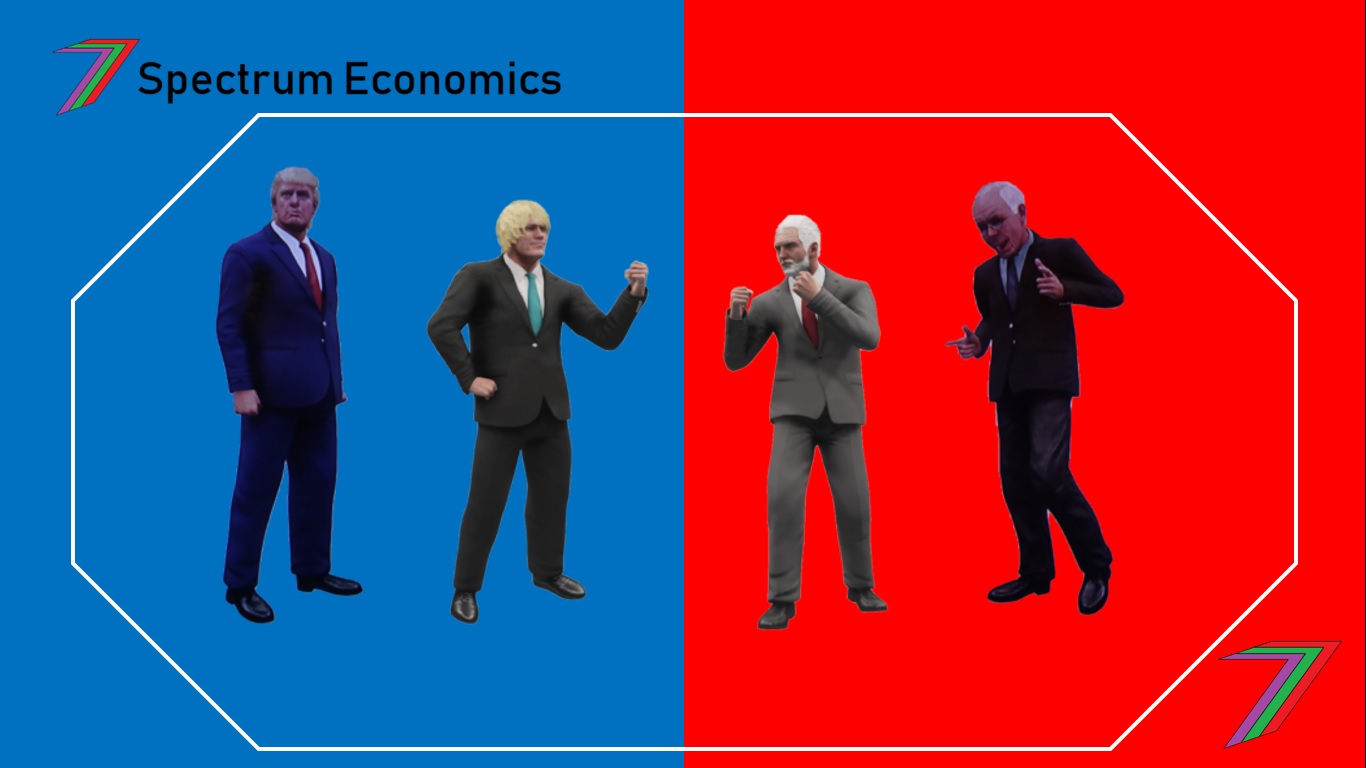
Everyone has his or her own personal views. These views shape the way we observe the world and conduct ourselves. In this post, I want to investigate the political spectrum/s. People often mistakenly label themselves as left-wing or right-way. Left-wing and right-wing positions are constantly shifting and largely lack clarity. To call someone left-wing or right-wing is a too simplistic view. There are many elements to both sides. Below is an example of how left-wing and right-wing could be described.
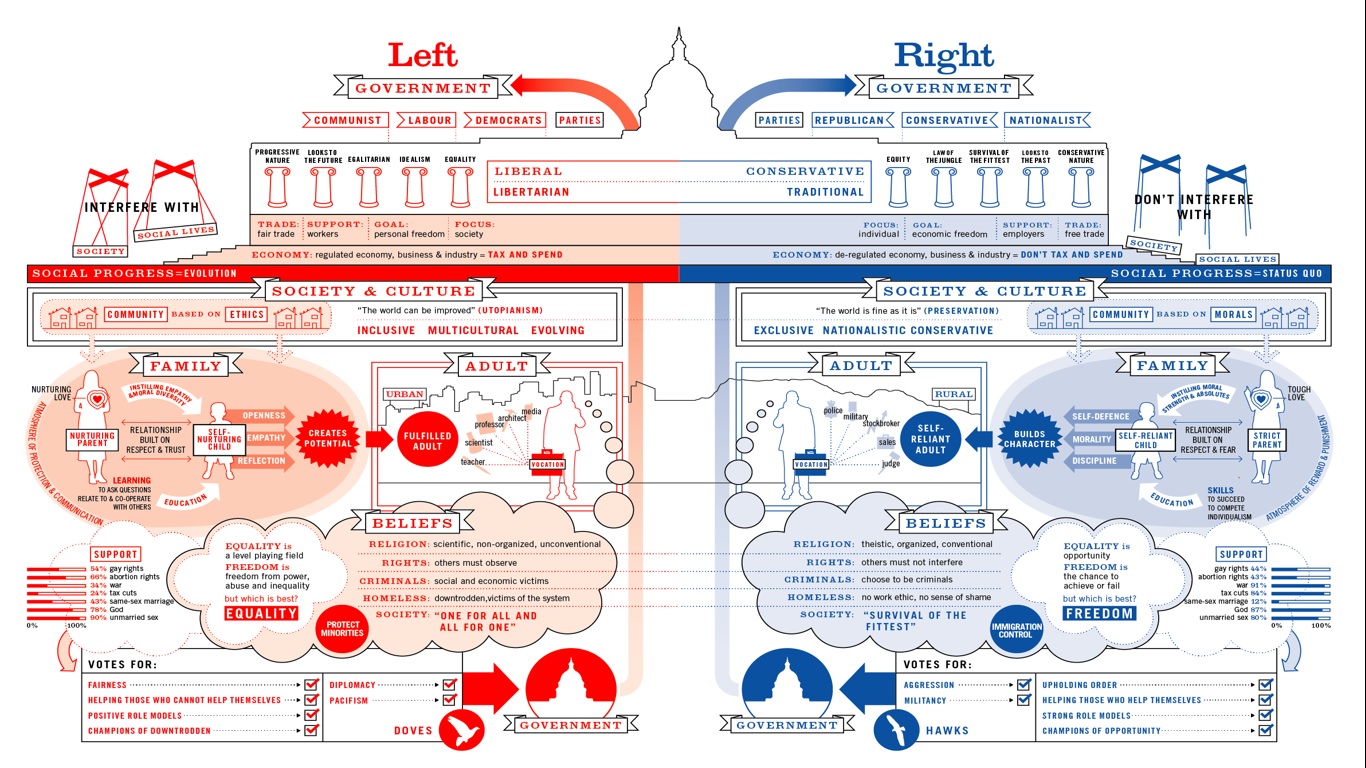
Source: Information is Beautiful
Disclaimer: For the purpose of this post, the above figure is being treated as an accurate representation of left-wing and right-wing politics. This post is more focused on demonstrating the wide range of political views than the determination of a true representation of left-wing or right-wing politics in any particular part of the world.
When I look at the above figure, I can see things that I agree and disagree with on both sides. I imagine that most people would feel the same way even if they lean more to one side than the other.
An alternative approach would involve broadening our view of the political spectrum. Figure 2 explores the spectrum on two axes. These are left-wing and right-wing and authoritarian and non-authoritarian.
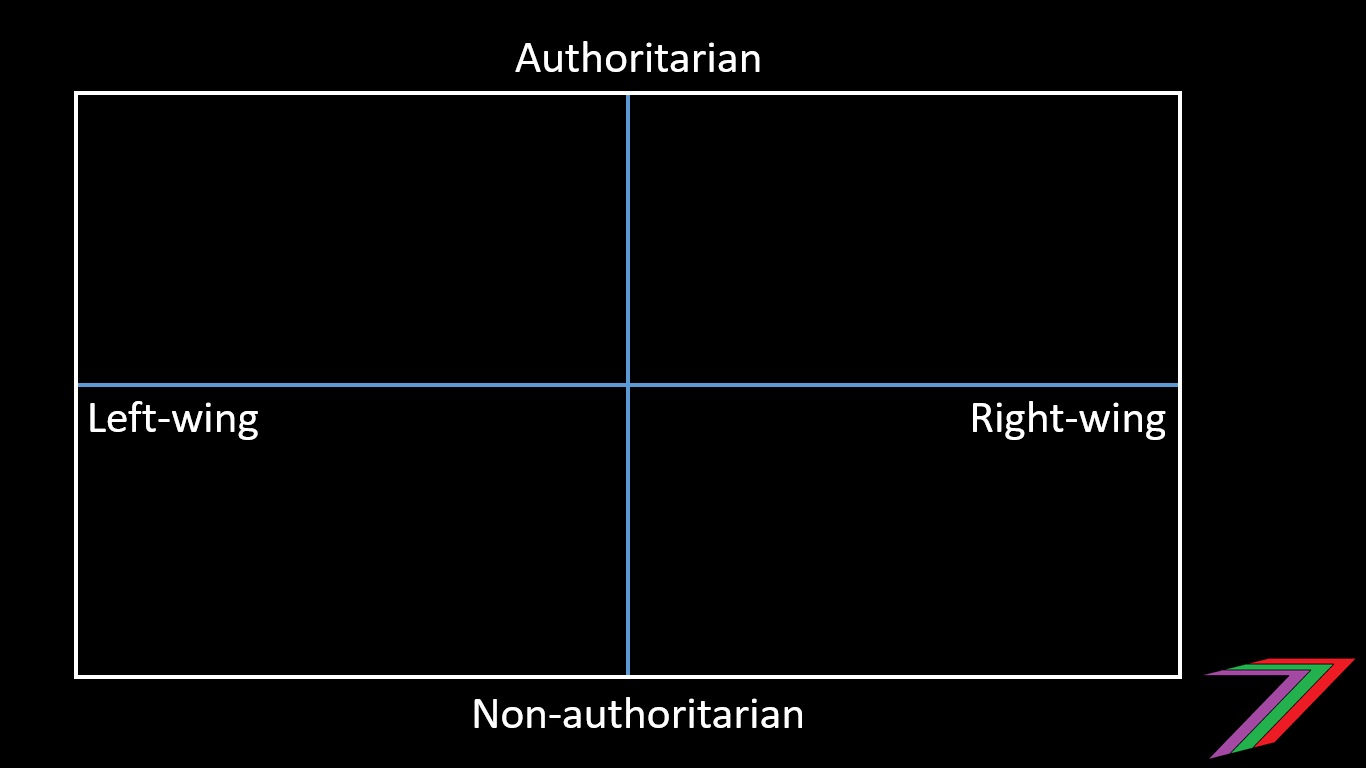
By including authoritarian and non-authoritarian, we can see that there is the potential for several differences between those on the same side of the left-right political spectrum. In Figure 3, I revisit Figure 1. If we assume that the information in Figure 1 is mostly accurate, we can make a comparison between the two. I have circled what I consider authoritarian aspects on both sides.
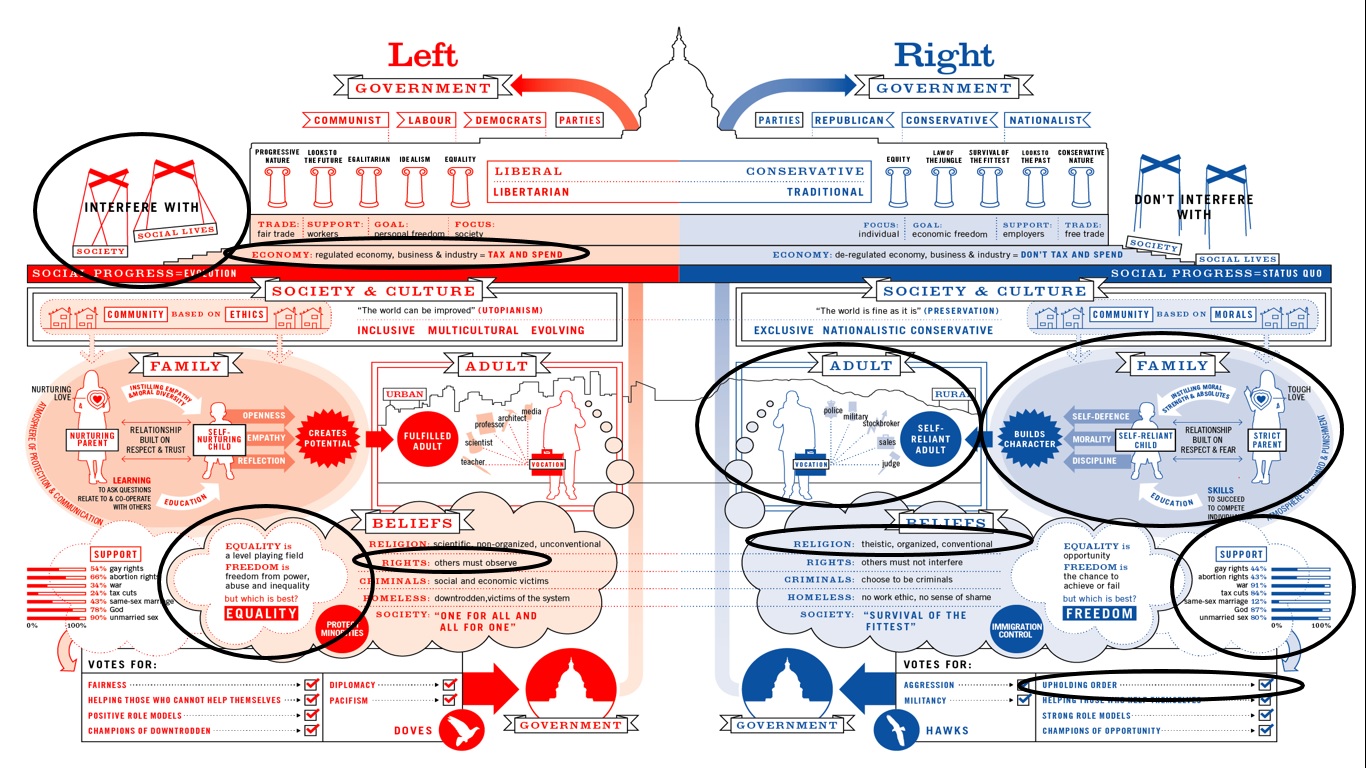
As can be seen from Figure 3, both sides appear to have a strong authoritarian stance regarding many issues. The left are authoritarian in regards to distribution of wealth, the operating of the economy, and rights. The right are authoritarian in regards to family, religion, law and order, and foreign policy.
Considering that both left-wing and right-wing sway towards authoritarianism, the spectrum should be broadened further to provide more insight into political leanings. It might be wise to replace left-wing and right-wing with alternative definitions such as state and private. We could also include dictatorship and democracy to create three axes. See Figure 4 below.

Source: Combination of models from multiple sources
Figure 4 demonstrates that there are many combinations of political views. The above 3D spectrum shows 27 (3 × 3 × 3). I believe there are far more combinations. The above spectrum also contains some close overlaps.
In Figure 5, I have changed the axes to present what I believe to be a more diverse model.
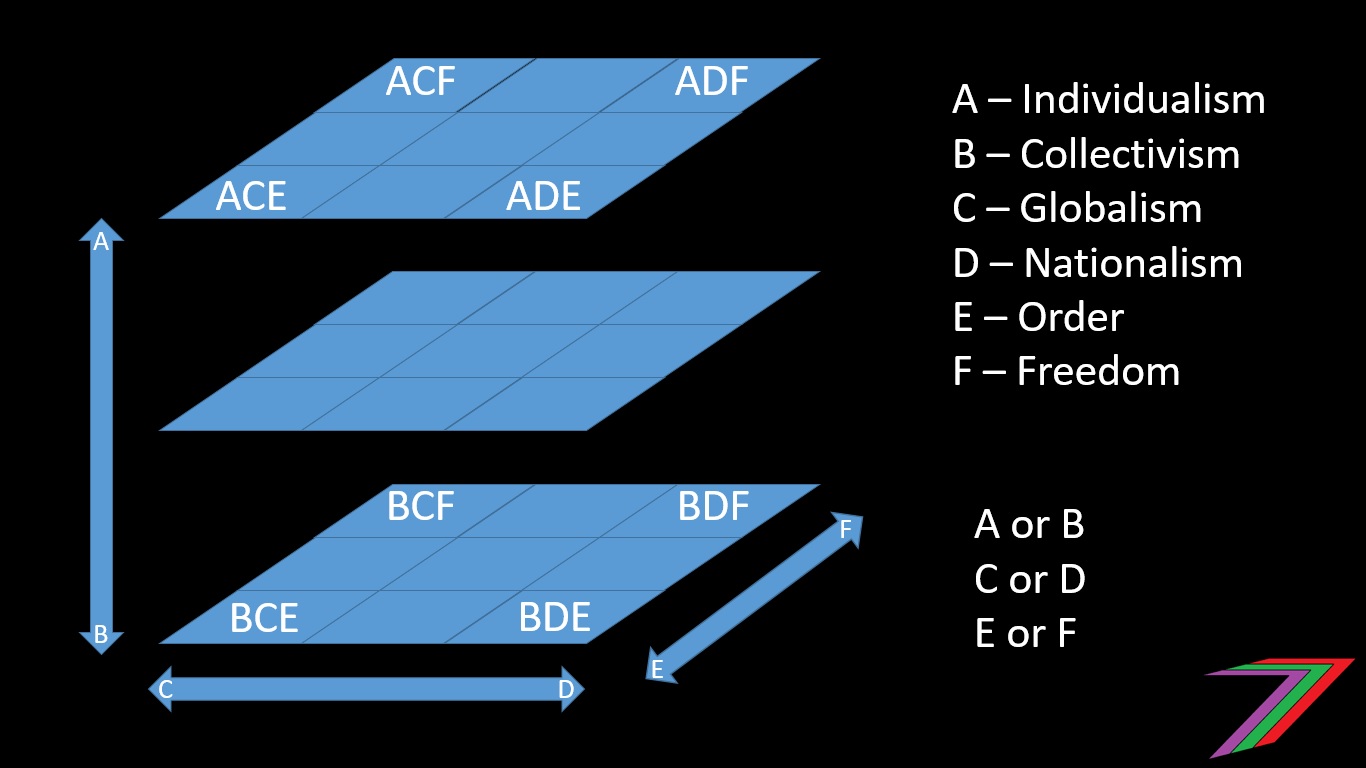
In this alternative version, I have changed the following:
The biggest change I made was to replace dictatorship and democracy with globalism and nationalism. I believe that dictatorship and democracy are not always at the opposite end of the scale. A dictator can gain power through democratic means, birthright or force. A dictatorship can also be considered a form of authoritarianism. An axis for globalism to nationalism stands independent to the other two axes of the spectrum.
In Figure 6, I revisit Figure 1 in regards to individualism and collectivism.

It appears that the left strongly lean towards collectivism and the right strongly towards individualism. The left focus on society, care and nurture within the family, and belief system of cooperation. The right focus on individuals, self-reliance, and survival of the fittest.
In Figure 7, I revisit Figure 1 in regards to globalism and nationalism.
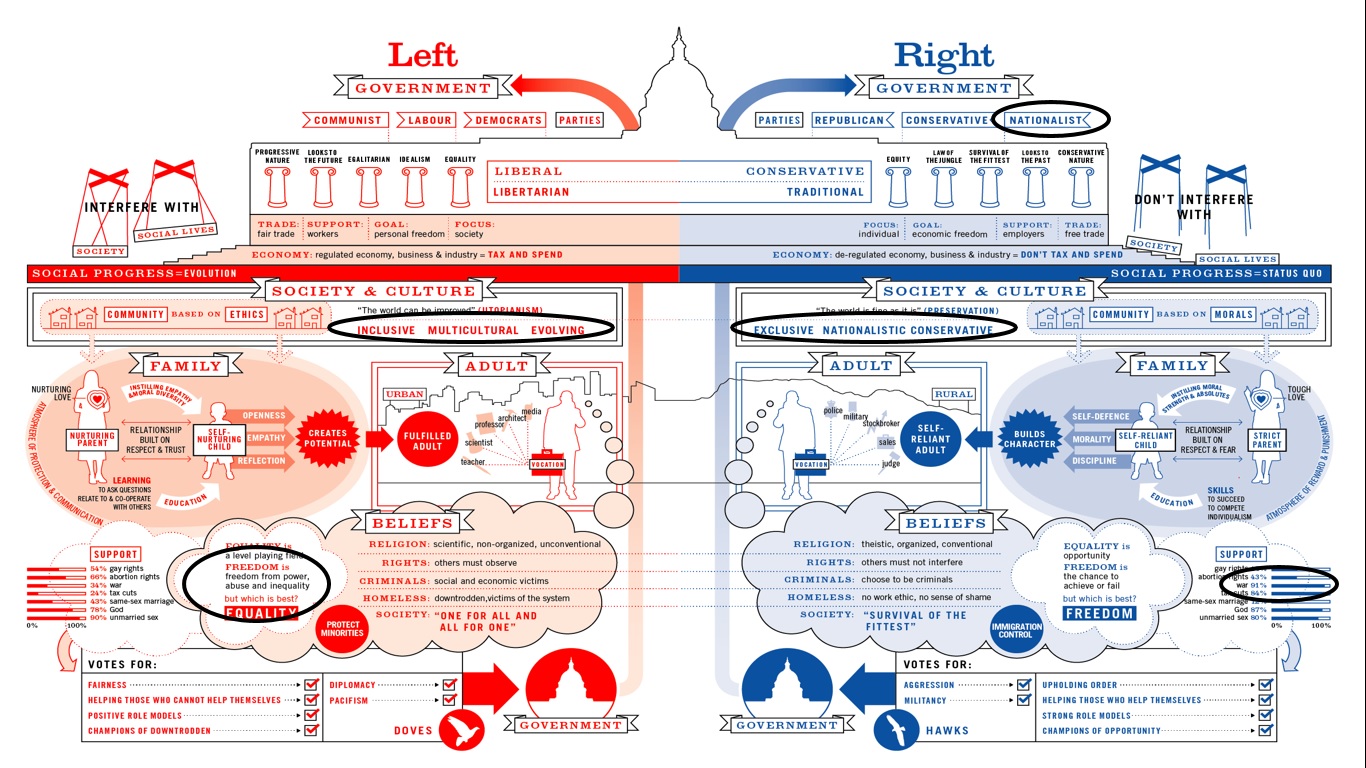
It appears that the left lean towards globalism and the right towards nationalism. The left have a multicultural focus and preference towards equality (I am assuming this would also include immigrants). The right focus on nationalism as stated and have a strong leaning towards war.
It is very difficult to present information in a 3D model using a 2D picture as information overlaps. Therefore, I have adapted the presentation of the 3D model into a 2D version, which uses multiple axes. A cube has eight corners. Therefore, the 2D version could be displayed as an octagon. Each point on the octagon represents an extreme view from the 3D model. See Figure 8.
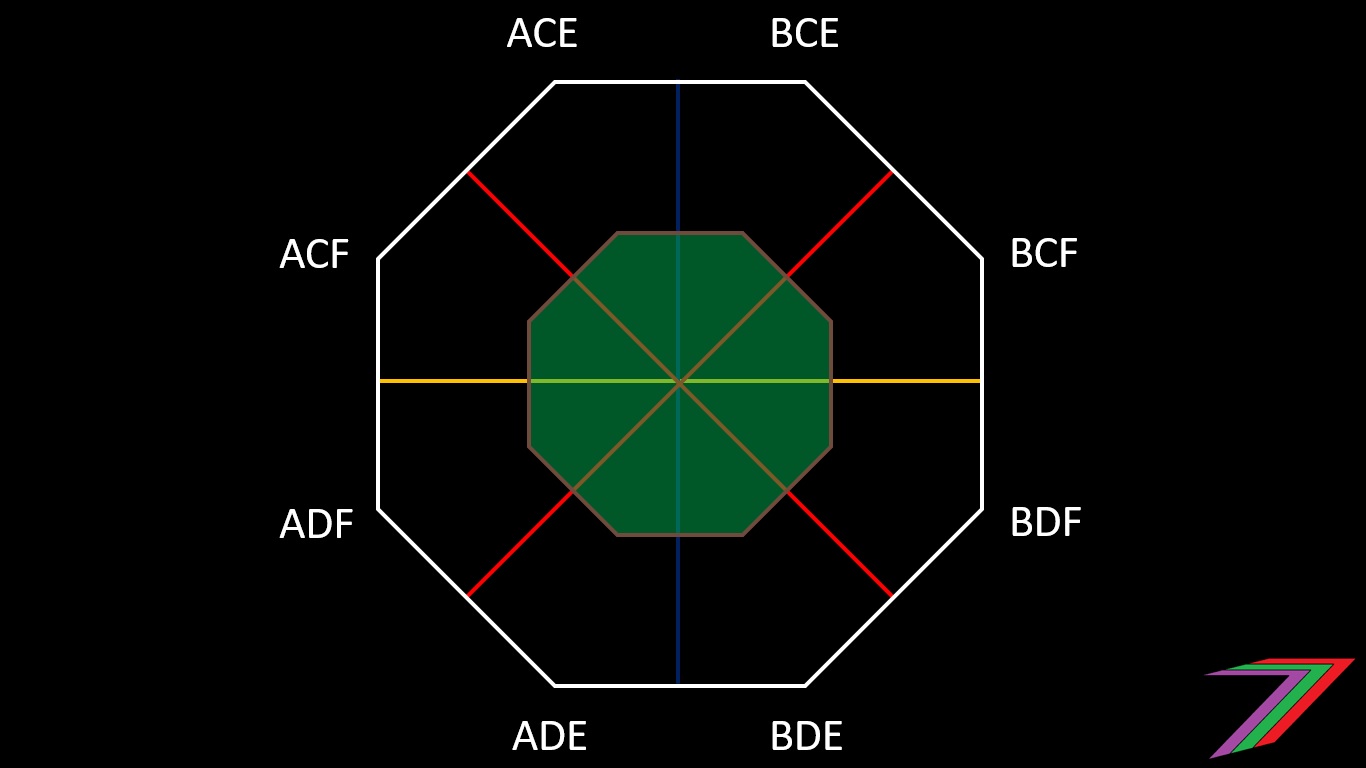
The model can be tricky to read at first as the axes change orientation depending on the placement of the segment. Figure 9 demonstrates how to read the graph.
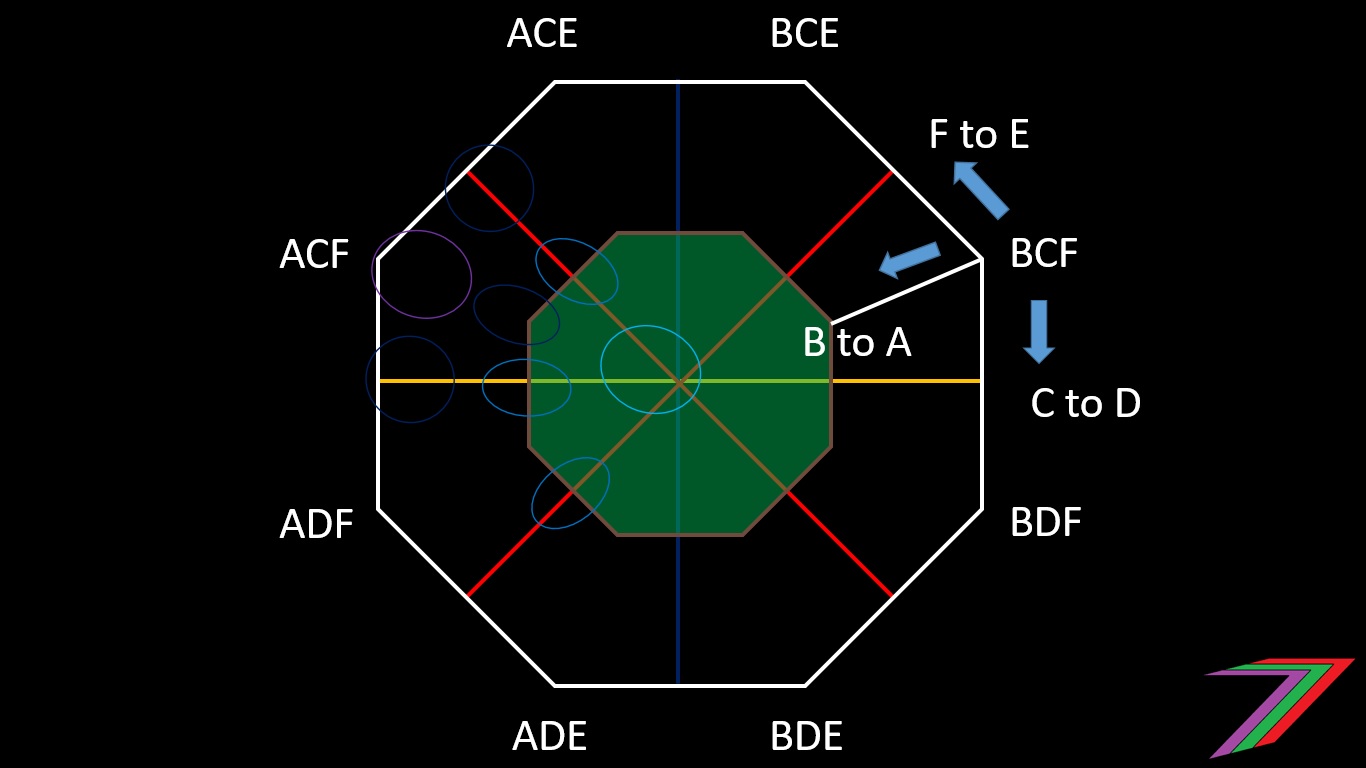
Each line on the graph is an axis. Figure 9 uses the point ‘BCF’ as example. The line between ‘BCF’ and ‘BCE’ is an axis for 'F' to 'E'. Reaching the red line between the two points represents a view that is indifferent between ‘E’ and ‘F’. However, the views ‘B’ and ‘C’ are still strongly held. The line between ‘BCF’ and ‘BDF’ is an axis for 'C' to 'D'. Reaching the yellow line between the two points represents a view that is indifferent between ‘C’ and ‘D’. However, the views ‘B’ and ‘F’ are still strongly held. The line between ‘BCF’ and the tip of the inner octagon is an axis between ‘B’ and ‘A’. Reaching the inner octagon represents a view that is indifferent between ‘B’ and ‘A’. However, the views ‘C’ and ‘F’ are still strongly held. The inner octagon represents an area where all views are converging towards a centre or an indifferent stance on all three views.
On the other side of the graph is ‘ACF’. The view ‘ACF’ is divided into four categories. In the purple circle, the view of ‘ACF’ is held strongly. In the dark blue circles, two of the views in ‘ACF’ are held strongly and one view is not. In the blue circle, one of the views in ‘ACF’ is held strongly and two views are not. In the light blue circle, none of the views in ‘ACF’ are held strongly. Altogether, the octagon should contain 27 unique circles.
This is the same as the 3D version of the model.
Now that I have explained the model, I can apply my own labels to the model; see Figure 10 below.
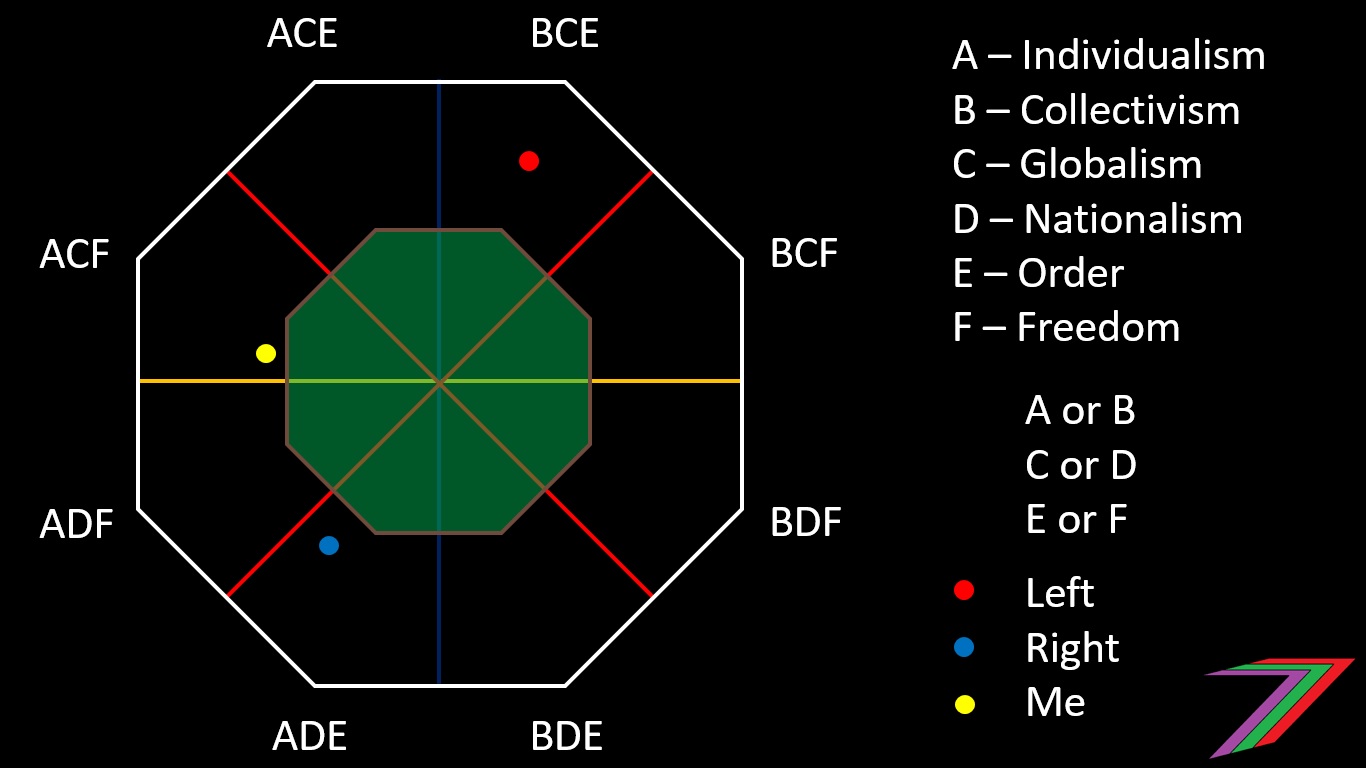
Based on the information provided in Figure 1, I have included where I believe the left-wing and right-wing fit into this graph. I have also included my own viewpoint as well. I have the left-wing in the segment that supports collectivism, globalism, and order. I have the right-wing in the segment that supports individualism, nationalism, and order.
I have also included my own view, which puts me in the segment ‘ACF’, which supports individualism, globalism and freedom. I strongly support freedom over order. I slightly support individualism over collectivism. I slightly support globalism over nationalism. I explain my views in the next section of this post.
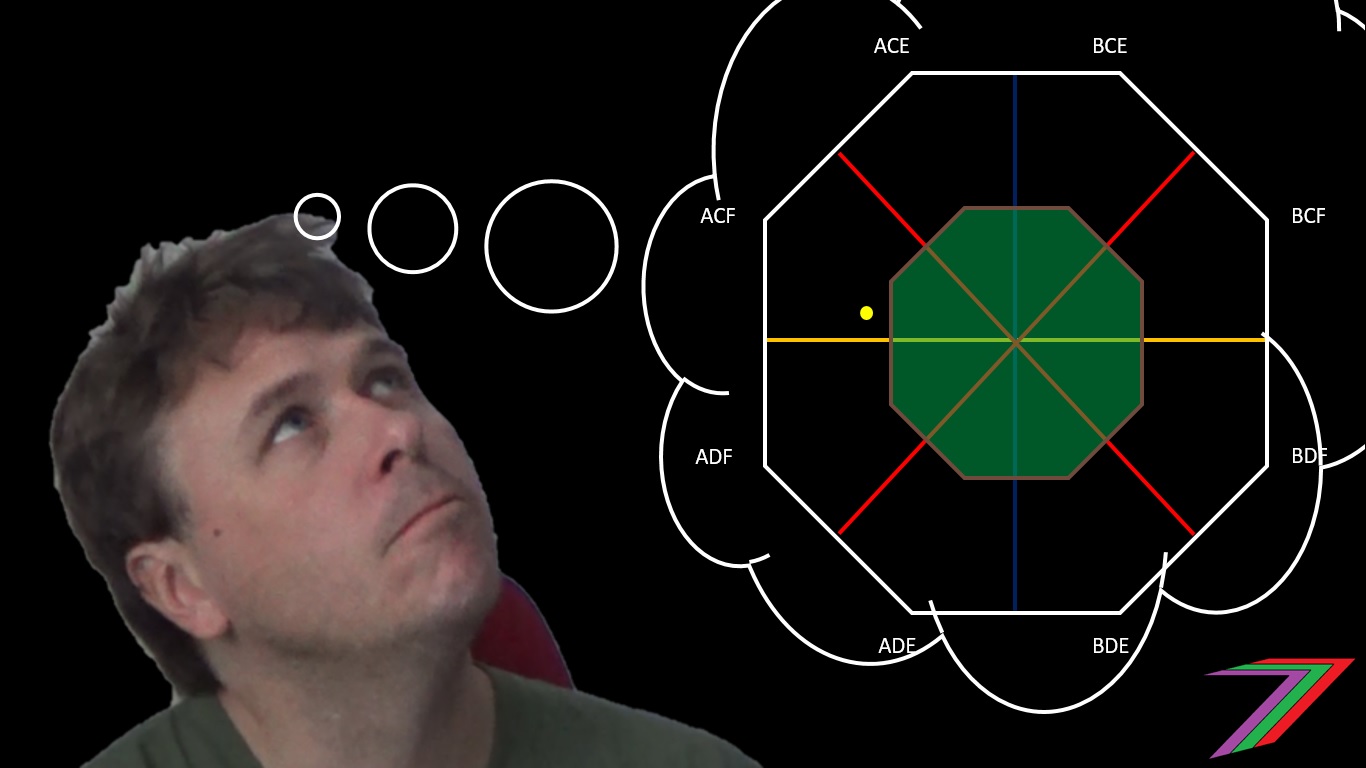
Hopefully the above described spectrum and graph should help people locate their stance on various political views as well as help assess the stance political parties have on these views as well. I have included my own stance in Figure 10. In this section, I will very briefly explain the rationale for my position on each view.
I respect the values and culture present in different regions in the world. I do not believe that people should attempt to dilute or obfuscate these cultures or values. However, I also believe that people should be free to choose where they want to locate as well as the communities they want to join. I strongly support ‘pull’ migration. I believe we should have a connected world that should be capable of utilising resources from anywhere in the world.
I strongly support freedom over order. However, total freedom is never going to be completely possible. Freedom can be abused and be used to take freedom away from others. Authority can be used to prevent people from imposing control over others. However, intervention by an authority is a restriction on freedom.
I believe laws, rules and regulation are necessary to a certain extent. However, I believe they should be kept as simple as possible. For example, laws should only be used to protect people from each other. Victimless crimes or purely self-abuse should not be considered crimes. Laws, rules and regulation should not be implemented as a mechanism to control people.
I quite like many of the ideas around collectivism. I strongly believe we should work together and cooperate as often as possible. However, I believe most people are more motivated to obtain individual rewards rather than group rewards. This opinion is based on both personal experience as well as observed behaviour. I believe that competition can bring out the best in people in terms of skill and motivation. Individual success also does not have to be defined by monetary gain.
I believe we should strive towards equal opportunity but not everyone is equal. We all have different strengths and weaknesses. We also add value in different ways but some people will add more value than others.
Culture plays a huge role in determining the value people place on individual and group rewards. Education can play a huge role in helping young people understand the value of working together as well as place less emphasis on monetary gain.
Individualism and collectivism can work together well if individual and group goals closely align. Team sports are a good example of when players can often achieve individual and team goals at the same time.
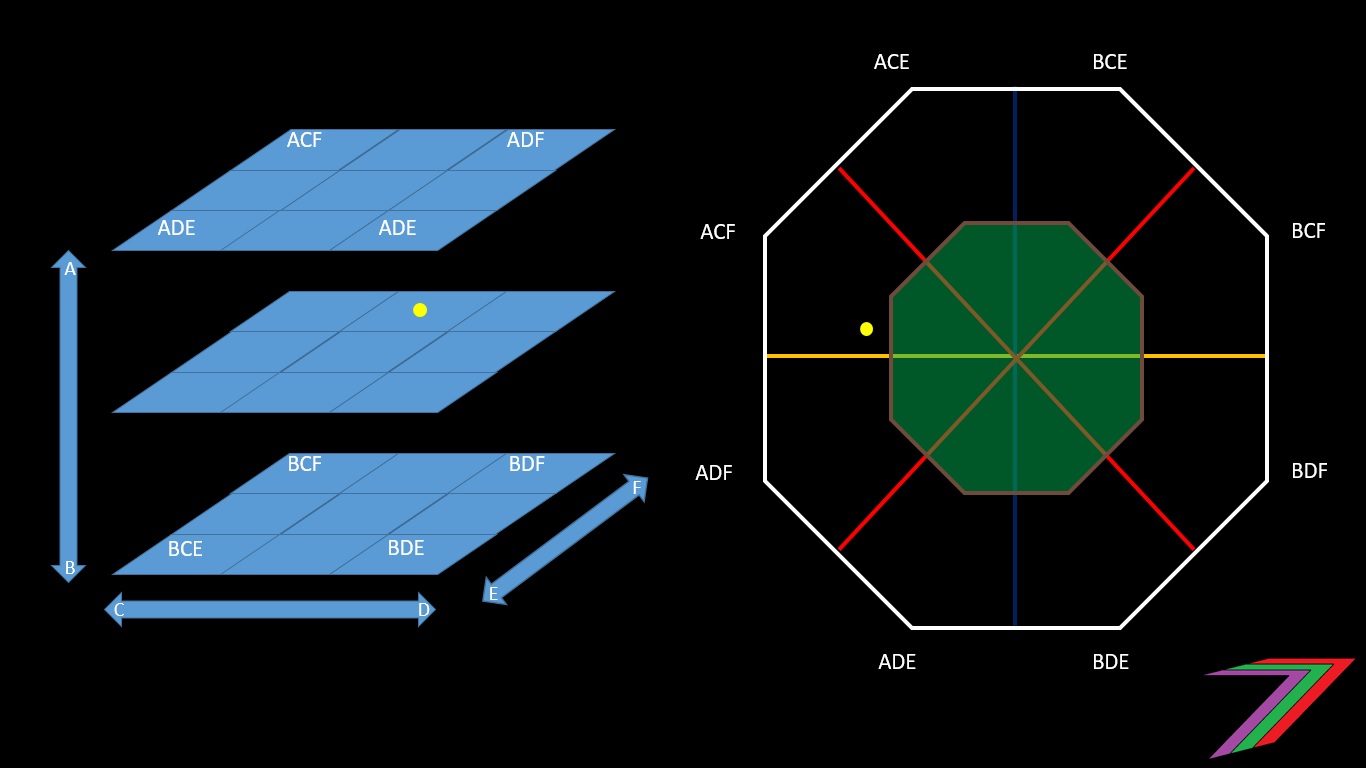
The purpose of this post was to demonstrate that there is more to the political spectrum than left-right arguments. This is particularly relevant as left-right arguments typically shift and are not well defined, and therefore cannot be clearly understood. Presenting views in a spectrum with multiple axes can help us identify our own views and the extent of them. The spectrum can also help us determine the stance of other people and groups. We can therefore see how closely we align with them. This can help us improve our decision making process and help us evolve in understanding other perspectives.

If you want to read any of my other posts, you can click on the links below. These links will lead you to posts containing my collection of works. These posts will be updated frequently.

I have launched my Udemy course ‘Guide to the Steem Ecosystem’. This course takes you on journey through the Steem Ecosystem. The course consists of 6 sections. These sections are as follows:
The course contains 56 video lectures (about 13.5 hours of viewing), 56 multiple-choice questions (10 to 12 at the end of each section), and 59 downloadable resources (presentation slides and additional material such as white and blue papers). The course is free-of-charge. Click the link above to access the course.
I also have an economics course, titled Economics is for Everyone, which contains about 4 hours of video content.




